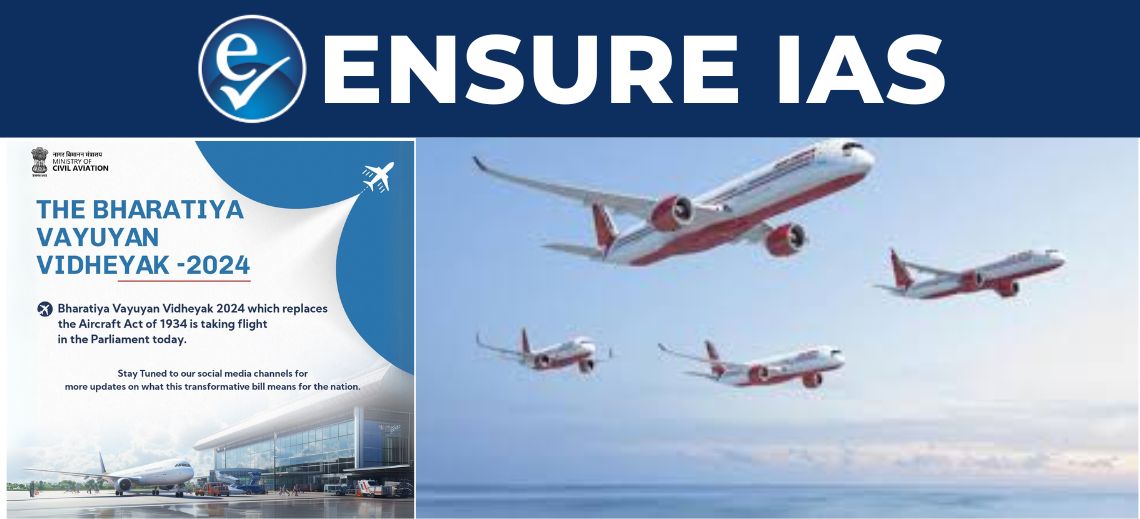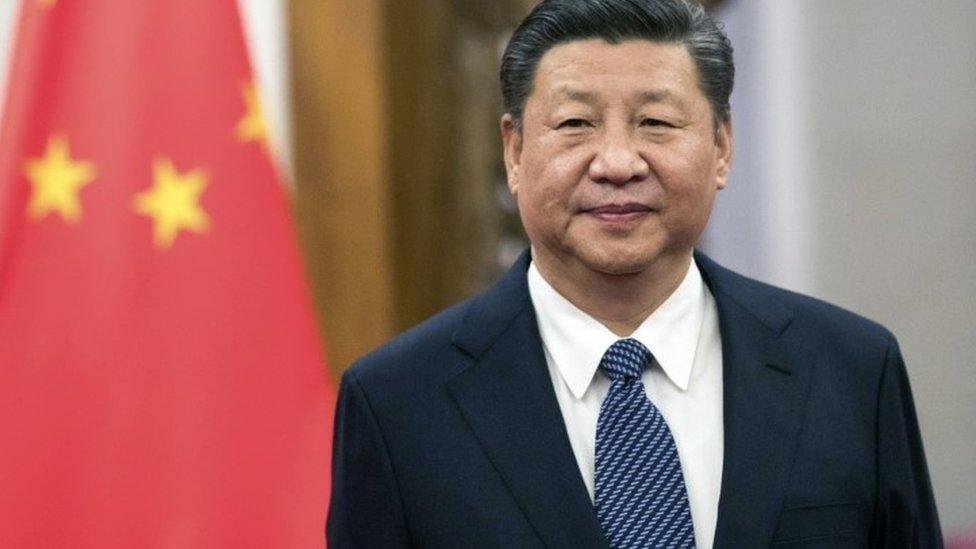- Courses
- GS Full Course 1 Year
- GS Full Course 2 Year
- GS Full Course 3 Year
- GS Full Course Till Selection
- Answer Alpha: Mains 2025 Mentorship
- MEP (Mains Enrichment Programme) Data, Facts
- Essay Target – 150+ Marks
- Online Program
- GS Recorded Course
- Polity
- Geography
- Economy
- Ancient, Medieval and Art & Culture AMAC
- Modern India, Post Independence & World History
- Environment
- Governance
- Science & Technology
- International Relations and Internal Security
- Disaster Management
- Ethics
- NCERT Current Affairs
- Indian Society and Social Issue
- NCERT- Science and Technology
- NCERT - Geography
- NCERT - Ancient History
- NCERT- World History
- NCERT Modern History
- CSAT
- 5 LAYERED ARJUNA Mentorship
- Public Administration Optional
- ABOUT US
- OUR TOPPERS
- TEST SERIES
- FREE STUDY MATERIAL
- VIDEOS
- CONTACT US
Bharatiya Vayuyan Vidheyak Bill 2024
Bharatiya Vayuyan Vidheyak Bill 2024

Recently, the President granted assent to the Bharatiya Vayuyan Vidheyak (BVV), 2024, which aims to replace the 90 years-old Aircraft Act, 1934 and modernize India's aviation sector. The new legislation seeks to enhance safety measures, align with global standards, and promote the growth of civil aviation in India.
Key Features of Bharatiya Vayuyan Vidheyak (BVV), 2024
|
Parameters |
Retained from Aircraft Act, 1934 |
Addition/ Changes in Bharatiya Vayuyan Vidheyak, 2024 |
|
Regulatory Structure |
The Act sets up three key authorities:
The central government exercises overall superintendence over these bodies. |
|
|
Regulation of aircraft-related activities |
The Act regulates activities related to aircrafts including manufacturing, use, operation, and trade. |
The Act now includes powers to regulate aircraft design. |
|
Power to make Rules |
The Act empowers the central government to make Rules on matters including:
|
The central government may now also make rules concerning Radio Telephone Operator certificates and licenses under the International Telecommunication Convention. |
|
Offences and Penalties |
Offences are punishable by:
|
Discretionary Penalties: The Central Government has the discretion to specify civil or criminal penalties for violation of certain Rules. E.g., implementation of international convention, protection of public health etc. |
|
Adjudication of penalties |
|
Second Appeal: A second appeal can be made to an officer of a higher rank than the First Appellate Officer. |
Aviation Governance in India
Aviation Sector in India – Key Facts
|
Concerns related to Bharatiya Vayuyan Vidheyak (BVV) 2024
- Lack of independence of DGCA: The central government exercises superintendence over DGCA unlike other regulatory bodies of telecom, insurance and electricity sector.
- Appellate System: Appeals against decisions of bodies like DGCA are limited to the Union Government, potentially affecting their efficacy.
- Arbitration: The unilateral appointment of an arbitrator by the government in compensation-related cases is seen as potentially violative of the Right to Equality under Article 14 of the Constitution.
Key Organizations under Ministry of Civil Aviation (MoCA)
|
Key legislations Governing Aviation in India:
- Aircraft Act, 1934 (and Aircraft Rules, 1937) – Regulates civil aviation activities and airport licensing.
- AERA Act, 2008 – Regulates tariffs for aeronautical services and monitors airport performance.
- FDI Policy –
- 100% Foreign Direct Investment (FDI) is permitted in scheduled air transport services and domestic airlines (49% automatic route, beyond 49% with government approval).
- 100% FDI is permitted for NRIs under the automatic route and in Greenfield and Brownfield airport projects.
Key Initiatives for India's Aviation Sector
1. Policies:
- National Civil Aviation Policy, 2016: Aims to make regional air connectivity affordable and convenient, promoting civil aviation and tourism.
- Vision 2040 for Civil Aviation Industry: A roadmap outlining long-term strategies for the development of India's civil aviation sector.
2. Schemes/ Initiatives:
- RCS-UDAN Scheme: Target to operationalize 1,000 UDAN routes and revive/develop 100 unserved & underserved airports/heliports/water aerodromes by 2024.
- Privatization of Airports: 25 airports are being privatized under the National Monetization Pipeline (NMP).
- Technological interventions:
- NABH Nirman (for airport capacity augmentation),
- Digi Yatra (for paperless travel)
- AirSewa (for online grievance redressal),
- GPS Aided GEO Augmented Navigation (GAGAN) (developed by AAI and ISRO for Air Traffic Management).
3. International Cooperation:
- Delhi Declaration on Civil Aviation (2024): Adopted at the 2nd Asia Pacific Ministerial Conference on Civil Aviation (APMC), it sets a framework for enhancing regional cooperation in civil aviation.
- Carbon neutrality initiatives: Standardization of Carbon Accounting and Reporting framework of Airports.
- Since 2014, 73 airports like Delhi and Bengaluru have switched to 100% green energy usage.
India's aviation sector is on a transformative path, with significant strides in infrastructure development, regional connectivity, and sustainability efforts. Bharatiya Vayuyan Vidheyak (BVV), 2024 can promote growth of the sector by removing ambiguity and confusion in the legal framework
|
Also Read |
|
NCERT Books For UPSC |
UPSC Daily Current Affairs |
UPSC Monthly Mgazine |
Best IAS Coaching in Delhi |
Free MCQs for UPSC Prelims |
UPSC Test Series |
ENSURE IAS NOTES |
Our Booklist |




